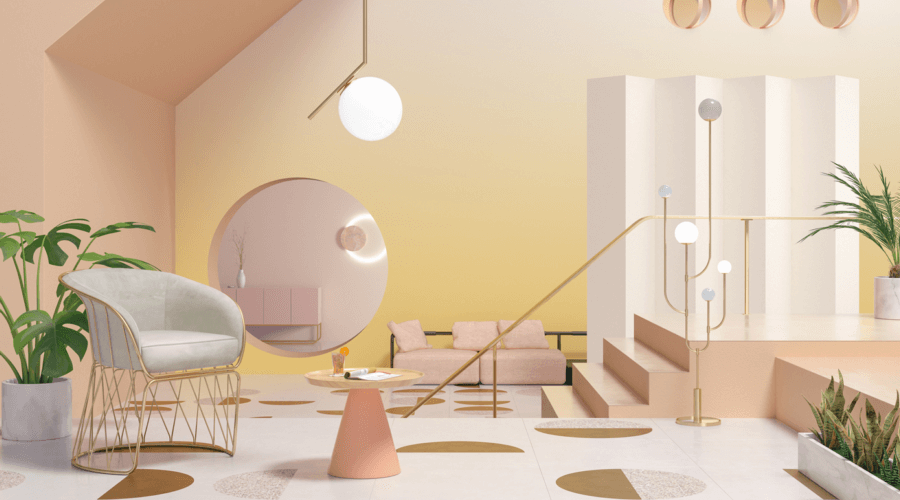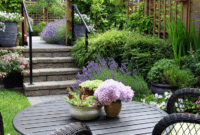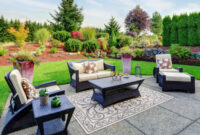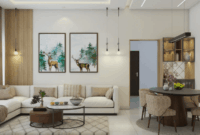1. Sustainable Luxury: The Heart of 2025 Interior Design
In interior design trends 2025, sustainability meets elegance. Homeowners are moving away from disposable furniture and opting for quality, eco-friendly pieces that last. Materials like reclaimed wood, bamboo, and recycled glass are becoming design staples, blending environmental responsibility with beauty.
According to Architectural Digest, sustainability is no longer a niche concept — it’s a design necessity. Think handmade ceramics, organic textiles, and locally sourced decor that tells a story. Brands like West Elm and IKEA are leading the charge with eco-conscious collections that prove you can have both style and substance.
Out: Fast furniture made from cheap, synthetic materials.
In: Durable, ethical designs that prioritize craftsmanship and longevity.
2. Earthy Color Palettes Take Center Stage
The vibrant jewel tones of recent years are fading, replaced by grounded, earthy hues. Modern home decor in 2025 is inspired by nature’s palette — soft terracotta, olive green, deep clay, sand beige, and muted ochre. These tones create calm, cozy spaces perfect for relaxation and mindfulness.
According to House Beautiful, earthy neutrals are the “new modern.” They pair effortlessly with natural materials like wood, rattan, and linen, bringing organic warmth to every room.
Pro tip: Add contrast with black accents or brushed brass fixtures to keep your palette modern and grounded.
Out: Cold grays and overly sterile white interiors.
In: Warm neutrals that connect your home with nature.
3. Tech-Integrated Smart Homes
One of the biggest shifts in 2025 interior design is the seamless integration of technology. From AI-powered lighting to voice-controlled climate systems, homes are becoming smarter — but also sleeker. The goal is not to display technology, but to make it invisible and intuitive.
Brands like Samsung SmartThings and Amazon Alexa are making automation more accessible than ever. You can now adjust your lighting based on circadian rhythm or use smart glass that changes transparency with a tap.
Out: Clunky gadgets and visible cables.
In: Minimalist, built-in smart systems that blend effortlessly into your space.
4. Maximalist Personalization: Goodbye Minimalism, Hello Expression
While minimalism dominated the 2010s, interior design trends 2025 are all about expressing personality. Designers are calling this the “warm maximalism” movement — bold yet curated. Think layered textures, rich color combinations, and eclectic decor that tells a personal story.
According to Dezeen, maximalism in 2025 isn’t about clutter; it’s about meaningful curation. Combine vintage finds, statement art pieces, and heirloom furniture to give your home character and depth.
Out: Sterile, copy-paste minimalist designs.
In: Personality-driven interiors filled with story and soul.
5. Textural Variety and Tactile Design
Texture is taking over as the key to visual interest in modern home decor. Designers are layering materials like boucle, linen, leather, stone, and velvet to create sensory-rich spaces that invite touch and comfort. This approach brings warmth and dimension without overwhelming the eye.
For example, Livingetc notes that textural contrast is essential for balancing modern interiors — pairing smooth marble with woven rugs or matte walls with glossy ceramics.
Out: Flat, one-dimensional spaces.
In: Layered textures that make your home feel alive and inviting.
6. Multi-Functional Spaces and Flexible Living
Remote work has redefined how we use our homes. In 2025 interior design, versatility is key. Furniture and layouts are becoming adaptable — think convertible desks, modular sofas, and movable partitions.
According to ArchDaily, multifunctional spaces are not just practical but also economical and sustainable.
For instance, a living room can double as a workspace or a guest area with smart furniture that transitions seamlessly. Built-in storage and foldable designs help maintain visual order without compromising functionality.
Out: Rigid room layouts.
In: Adaptive, fluid spaces that evolve with your lifestyle.
7. Curves and Organic Shapes Dominate
Sharp lines are out, and soft, flowing forms are in. From rounded furniture to arched doorways, interior design trends 2025 celebrate organic shapes that mimic nature’s elegance. These curves promote a sense of calm and fluidity throughout the home.
Designers at Elle Decor predict an increase in “biomorphic” furniture — designs inspired by natural forms like waves or leaves. Combine curved sofas with sculptural lighting to create inviting, dynamic interiors.
Out: Harsh geometric lines and boxy furniture.
In: Rounded edges and flowing silhouettes that create harmony.
8. Statement Lighting as Functional Art
Lighting has evolved from utility to artistry. In modern home decor, sculptural fixtures serve as focal points that define a space’s mood. Oversized pendants, LED strips, and organic-shaped lamps are among the most sought-after trends for 2025.
Luxury brands like Louis Vuitton Objets Nomades and Tom Dixon are leading the way in transforming lighting into conversation-worthy art.
For practical yet stylish choices, explore CB2 or Lumens collections.
Out: Plain overhead lights.
In: Custom, expressive lighting that doubles as sculpture.
9. Biophilic Design: Bringing Nature Indoors
Biophilic design continues to dominate interior design trends 2025. This approach integrates nature into interiors through plants, organic materials, and natural light. It’s not just aesthetic — it promotes well-being, productivity, and air quality.
Incorporate large indoor plants like fiddle-leaf figs, vertical gardens, or green walls. Natural textures such as stone, rattan, and jute complete the look. According to Healthline, exposure to greenery indoors can reduce stress and improve mood — a win for mental health and design alike.
Out: Artificial plants and sterile office-like setups.
In: Real greenery and materials that breathe life into spaces.
10. Artisanal Craftsmanship and Custom Pieces
Mass-produced furniture is being replaced by handmade, custom pieces that showcase artistry and individuality. Homeowners are investing in craftsmanship — pottery, bespoke furniture, and handwoven textiles that reflect local culture and skill.
Websites like Etsy and 1stDibs are great places to find unique, handcrafted pieces. 2025 interior design celebrates imperfection — it’s all about authenticity and character.
Out: Generic, factory-made furniture.
In: Artisan-made pieces that bring warmth and individuality to your home.
Conclusion: A Year of Conscious, Creative Design
The future of interior design trends 2025 lies in mindfulness, creativity, and connection. Every design choice — from color palettes to materials — reflects a shift toward more meaningful living. Modern home decor in 2025 is not just about looks; it’s about creating spaces that nurture, inspire, and evolve with us.
Outdated trends are giving way to authenticity, sustainability, and comfort. Whether you’re remodeling your entire home or simply updating a corner, let your design choices express who you are — because true style is timeless when it’s personal.
For more ideas, check out Modern Home Design Inspirations (example.com) and Eco-Friendly Home Decor Tips (example.com) for related insights.




